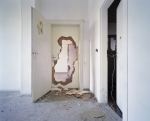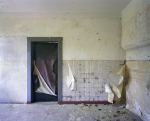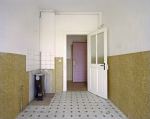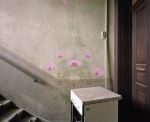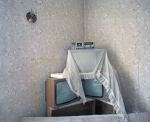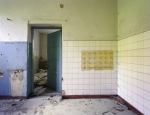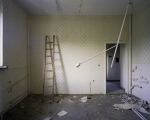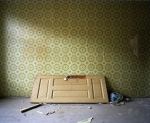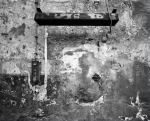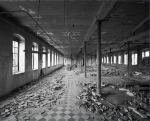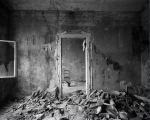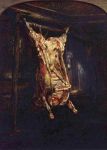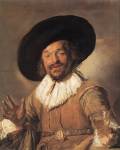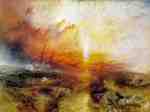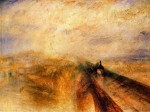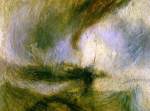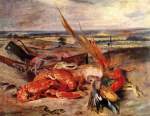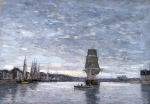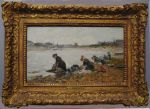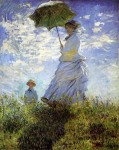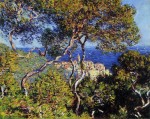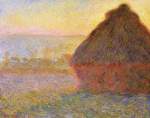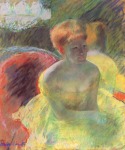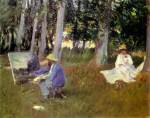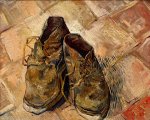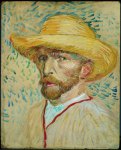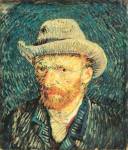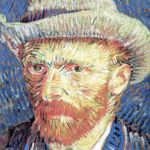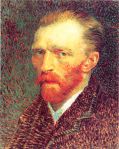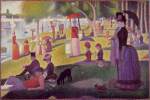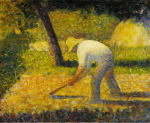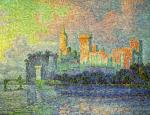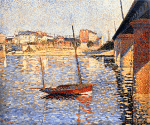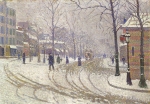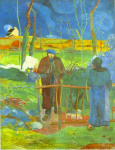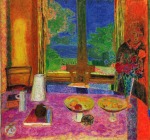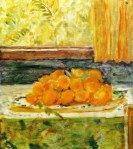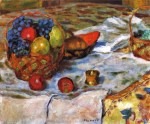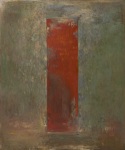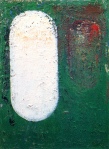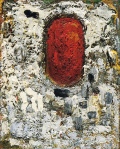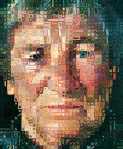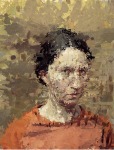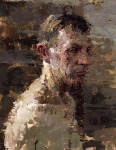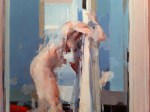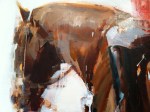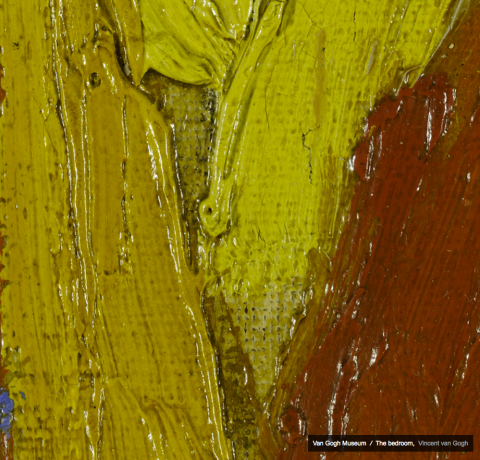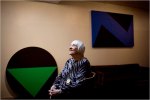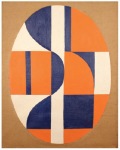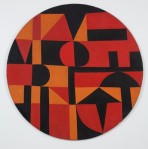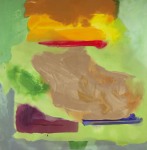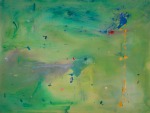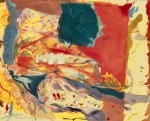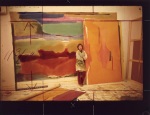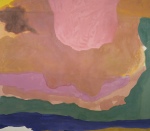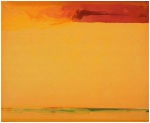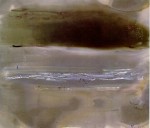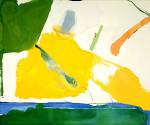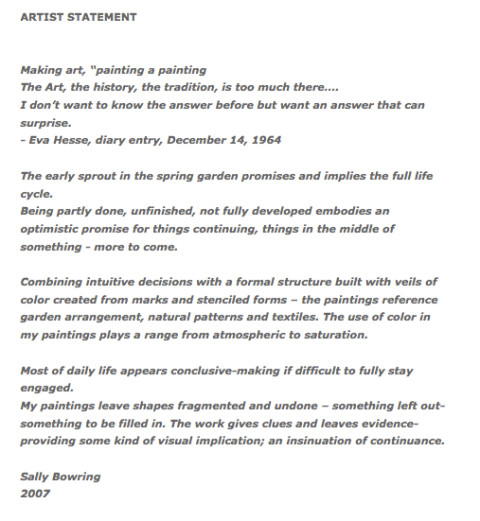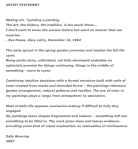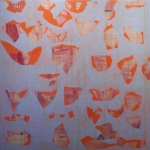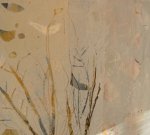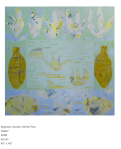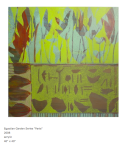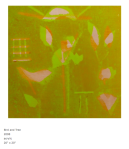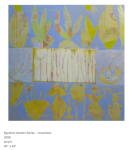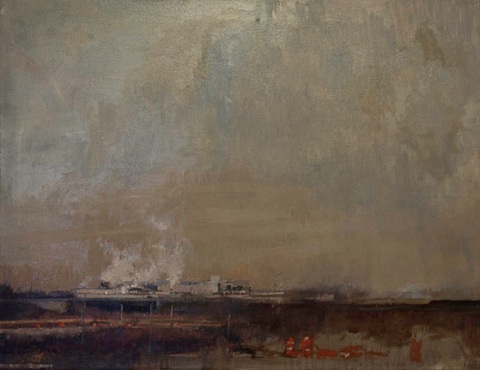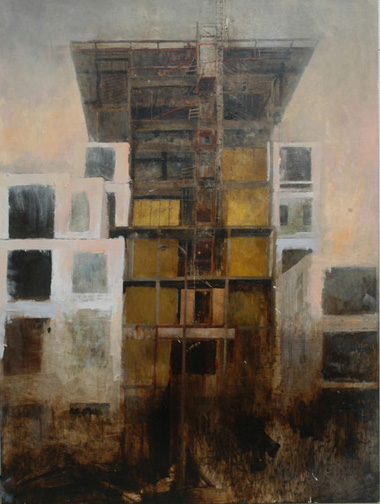Fredrik Marsh, 2008 Guggenheim Fellow
February 15, 2011 § Leave a comment
Exhibition and Gallery Talk at Ohio Wesleyan University
Fred Marsh, winner of a Guggenheim Fellowship in 2008 for his photographic work, is exhibiting 8 of his large photographs from his series TRANSITIONS: THE DRESDEN PROJECT at Gallery 2001 in Beeghley Library of Ohio Wesleyan University. The artist will give a gallery talk on Wednesday, February 16, at 4:15.
Artist’s Statement
During a three-month artist residency in Dresden, Germany in 2002 and over the next 4 subsequent summers, I explored the city and its outskirts, finding myself increasingly drawn towards photographing empty structures overlooked in the rebuilding, reconstruction, and renewal process still underway. Encountered during these many extended walks throughout the now familiar city, my efforts concentrated on photographing the detritus of human culture discovered in the decaying interior spaces of vacant factories, abandoned apartments, and hotel rooms. The Dresden Project demonstrates the juxtapositions and ironies still abundant in the post-Socialist world, showing the old and the new as well as the grandeur and the decay of these once-majestic buildings.
Concerned with cross-disciplinary issues of aesthetics, contemporary history, cultural & political geography, this long-term photographic project is my most mature and overarching. Combining a sense of Post-romanticism with traces of the remains of the Russians, the East German military-industrial complex in the uninhabited Wilhelminian buildings left behind, the Dresden photographs convey a mixture of melancholy and beauty, even tenderness, without sentimentality. I felt on the front edge of recording history as I documented these scenes of anonymous human stories.
http://www.fredrikmarsh.com/index.cfm
“Le Petit Tache:” Divisionist Technique and Optical Mixing
February 7, 2011 § 5 Comments
Impressionist & Divisionist Technique
Landscape was the genre in which divisionist techniques were born and most developed, beginning with Turner and Delacroix who began to exploit the observations and theories of Chevreul and Goethe on the optical mixing of color by painting with distinct touches of unblended paint, side by side, allowing the color to “mix” in the eye.
The work of Turner and Delacroix, as well as that of Goethe and Chevreul in the early 19th century, had a profound impact on Monet, Pissaro, Sisley, Renoir, and others of the group that later became known as “Impressionists.” As students, their academic training taught them to shade forms off into brown and black in the shadows. These young painters could see that shadows were actually colored, and that, in fact, the whole visual field was shimmering with color sensation. Local color, the notion that things have a distinct, unchanging color, was shattered in the new awareness of how color, light, and context influence the perception of color. Their dissatisfaction with the limitations of academic teaching led them out of the studios into nature to work out a new way of painting based on the broken touch.
The technique itself was not new but its application was. The Impressionists built on an academic method widely taught in the ateliers of Paris known as the “petit-tache,” or little touch, a technique of applying unblended touches of color which later would be blended with a soft, badger-hair brush to disguise the effect and create a smoother, more refined look. The Impressionists were reviled, not only for their subject matter, which confronted every day realities of contemporary life as opposed to the classicizing conceits of academic painting, but also for exhibiting finished works with this broken touch, a direct confrontation to the tastes of the day. Seurat, and Signac developed the divisionist technique into the style known as Pointillism, based on their growing interest in the scientific application of color physics to painting.
Painters like Cezanne, Van Gogh, Gauguin, Serusier, Bonnard, and many others, were less interested in the science of color than they were in its emotional impact, and pushed color saturation into new subjective realms, developing very personal styles that derived from the use of the “petit-tache.”
- Rembrandt
- Frans Hals
- Frans Hals
- Turner
- Turner
- Turner
- Delacroix
- Boudin
- Boudin
- Monet
- Monet
- Monet
- Monet
- Cassatt
- John Singer Sargent
- Van Gogh
- Van Gogh
- Van Gogh
- Van Gogh
- Van Gogh
- Seurat
- Seurat (detail)
- Seurat
- Seurat
- Signac
- Signac
- Signac
- Signac
- Gauguin
- Serusier
- Bonnard
- Bonnard
- Bonnard
- Jake Berthot
- Jake Berthot
- Jake Berthot
- Chuck Close
- Ann Gale
- Ann Gale
- Alex Kanevsky
- Alex Kanevsky
- Alex Kanevsky
Google Art Project
February 2, 2011 § 1 Comment
Google Art Project allows you to take virtual tours of major world art museums and zoom in on art with incredible resolutions.
“You don’t decide to be an artist, art gets inside of you..” -Carmen Herrera, 1915-
January 31, 2011 § Leave a comment
Carmen Herrera (born May 31, 1915) is a Cuban painter, born in Havana, who has lived in New York since the mid-1950s and has recently seen her work recognized in international circles. After six decades of private painting, she sold her first artwork in 2004 when she was 89 years old. A retrospective exhibition opened in July 2009 at the nonprofit IKON Gallery in Birmingham, England, and is traveling to the Pfalzgalerie Museum in Kaiserslautern, Germany from January 23rd to May 2nd 2010. London’s Tate Modern and the Hirshhorn Museum and Sculpture Garden in Washington, D.C. have recently acquired her works. -Wikipedia
Excerpts from a recent interview at The Guardian:
“When did you decide you were an artist?
You don’t decide to be an artist, art gets inside of you. Before you know it you’re painting, before you know it you’re an artist. You’re so surprised. It’s like falling in love.
Are you still learning now?
Yes, I am. I’m more dedicated to my art now and I’m more watchful. Anything – a piece of paper that’s folded in a funny way – I think, “ah, I can use that”. I feel much more aware now.”
Read the full interview at The Guardian.
Joanne Mattera Art Blog: Guaranteed Biased, Myopic, Incomplete and Journalistically Suspect
January 31, 2011 § Leave a comment
Have you ever wondered if being an artist is a legitimate career? Here’s a new link to bookmark, Joanne Mattera’s Art Blog: straight talk from an artist about the business side of art, among other things. A sample post….
“In a recent interview in The Guardian, the 95-year-old Cuban-born, New York City-based abstractionist Carmen Herrera–”discovered” at the age of 89–was asked what advice she would give her 20-year old self.
This is her answer: ‘Don’t hurry up, just take your 20s as long as you can. But the 20s is not an easy time. A lot of things are coming to you that you’re not ready to absorb. You have to get old and wrinkled and grey-haired before you know what they’re talking about.’
I don’t know about the “old and wrinkled and grey-haired,” but since I teach a course to art school seniors about to embark on their art careers, I often give to them the advice I wish someone had given me. Here’s what I would tell my 20-year-old self: ……….”
Continued on http://joannemattera.blogspot.com/
Paint and Process, Week 4: Helen Frankenthaler
January 30, 2011 § Leave a comment
Helen Frankenthaler is known for her large scale paintings made with poured paint on unstretched canvas, and her experimental manipulations of liquid paint using tools such as squeegees, housepaint brushes and sponges.
New Figure Exhibition at College of William and Mary
January 29, 2011 § Leave a comment
This came in from my friend Bill Barnes at William and Mary, an exhibition of contemporary figure painters of note. Lots of links to the individual artists.
http://www.wm.edu/as/andrewsgallery/currentexhibitions/index.php
Week 3: Paint and Process: Sally Bowring
January 27, 2011 § Leave a comment
Sally Bowring
is a painter who lives and works in Richmond, Virginia. She teaches painting at Virginia Commonwealth University. Her paintings come from her intense interest in, and observation of what’s around her: nature, her garden, the city, music, food, poetry, forms of all kinds. In one of her artist statements she references Aretha Franklin as a source of inspiration. Sally’s paintings appeal directly to our senses through their rich textures and color, and by their references to natural forms which emerge and disappear into the many layers of the painted surface. She sometimes uses masks and stencils to form windows, or openings, in the calm painted skins of her panels through which we can glimpse back into the layers and substrates of earlier, more kinetic stages in the painting and the vigorous mark-making that reveals the artist’s hand. Her color is “up-tempo,” optimistic in its ebullience and just pushing at the edge of acidic. Sally Bowring’s paintings are beautiful essays on the interchange between her meditations on the great givens of nature, and the intuitive flow of formal process. They are both image and object.
Shared Intelligence: American Painting and the Photograph
January 26, 2011 § Leave a comment
Exhibition at the Columbus Museum of Art, February 4 – April 24.
“Painting and photography have had a long relationship in American art. Since its invention, photography has influenced the way we see the world as much as how paintings have for centuries. Shared Intelligence explores the dynamic ways visual artists have been inspired by and used the photograph. The exhibition of more than 75 paintings and photographs focuses on the work of American painters for whom the photograph has been essential to the development of their work, such as Thomas Eakins, Frederic Remington, Charles Sheeler, Georgia O’Keeffe, Norman Rockwell, Andy Warhol, and contemporary artists, such as Robert Rauschenberg, Chuck Close, David Hockney, and Sherrie Levine. Major works by such ground-breaking photographers as Eadweard Muybridge, Alfred Stieglitz, Man Ray, Edward Weston, Walker Evans, and Margaret Bourke-White will also be included.”
http://www.columbusmuseum.org/exhibitions/future-exhibitions.php
Ryan Smith at Art Access Gallery, Columbus
January 21, 2011 § Leave a comment
